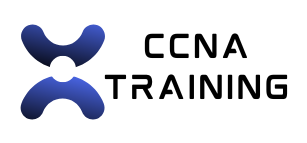The CCNA 200-301 exam is a comprehensive assessment of a candidate’s knowledge and skills in networking. It covers a wide range of topics, including network fundamentals, network access, IP connectivity, IP services, security fundamentals, and automation and programmability. The exam is designed to test the candidate’s ability to install, configure, operate, and troubleshoot medium-sized routed and switched networks. It also evaluates their knowledge of security fundamentals, automation, and programmability. The exam consists of 120 minutes and includes 100-105 questions. The passing score for the exam is 825-850 out of 1000.
The CCNA 200-301 exam is a crucial step for individuals looking to pursue a career in networking. It is a globally recognized certification that validates the candidate’s ability to work with networking technologies. The exam covers a wide range of topics, including network fundamentals, network access, IP connectivity, IP services, security fundamentals, and automation and programmability. Candidates who pass the exam demonstrate their proficiency in installing, configuring, operating, and troubleshooting medium-sized routed and switched networks. They also showcase their knowledge of security fundamentals, automation, and programmability. The CCNA 200-301 exam is an essential certification for individuals looking to advance their careers in networking and is highly regarded by employers in the industry.
Key Takeaways
- The CCNA 200-301 exam is a comprehensive test of networking knowledge and skills, covering a wide range of topics including networking fundamentals, network device configuration and troubleshooting, IP connectivity, and network security.
- Essential study materials for the CCNA 200-301 exam include official Cisco study guides, practice exams, and online training courses. It is also recommended to use lab equipment or simulators to gain hands-on experience.
- Mastering networking fundamentals is crucial for success in the CCNA 200-301 exam. This includes understanding networking concepts such as OSI model, TCP/IP, subnetting, and VLANs.
- Configuring and troubleshooting network devices is a key part of the CCNA 200-301 exam. Candidates should be familiar with configuring routers, switches, and other network devices, as well as troubleshooting common network issues.
- Implementing and troubleshooting IP connectivity is another important aspect of the CCNA 200-301 exam. Candidates should be able to configure and troubleshoot IP addressing, routing, and NAT/PAT.
- Securing network devices and implementing network security is a critical part of the CCNA 200-301 exam. Candidates should understand security best practices, as well as be able to configure and troubleshoot security features on network devices.
- To prepare for the CCNA 200-301 exam, candidates should create a study plan, use a variety of study materials, and practice with hands-on labs or simulators. It is also important to take practice exams to assess readiness for the actual exam.
Essential Study Materials for CCNA 200-301
Studying for the CCNA 200-301 exam requires access to a variety of study materials to ensure comprehensive preparation. Essential study materials for the exam include official Cisco training courses, study guides, practice exams, and hands-on experience with networking equipment. Official Cisco training courses provide in-depth coverage of the exam topics and are designed to help candidates build a strong foundation in networking. Study guides offer a comprehensive overview of the exam objectives and provide valuable insights into key concepts and technologies. Practice exams are essential for assessing the candidate’s readiness for the exam and identifying areas that require further study. Hands-on experience with networking equipment is crucial for developing practical skills and gaining real-world experience.
In addition to official Cisco training courses, study guides, practice exams, and hands-on experience with networking equipment, candidates can also benefit from online resources such as forums, blogs, and video tutorials. Online forums provide a platform for candidates to connect with other individuals studying for the exam and share valuable insights and resources. Blogs offer in-depth articles and tutorials on networking topics, while video tutorials provide visual demonstrations of key concepts and technologies. By leveraging a combination of official study materials, online resources, and hands-on experience, candidates can ensure comprehensive preparation for the CCNA 200-301 exam.
Mastering Networking Fundamentals
Mastering networking fundamentals is essential for success in the CCNA 200-301 exam. Networking fundamentals cover a wide range of topics, including networking concepts, network architecture, network operations, and network security. Candidates must have a strong understanding of networking concepts such as protocols, topologies, and infrastructure components. They should also be familiar with network architecture principles, including the OSI model, TCP/IP model, and Ethernet standards. Additionally, candidates must grasp network operations, including routing, switching, and addressing. Finally, candidates should have a solid understanding of network security principles and best practices.
To master networking fundamentals, candidates should focus on building a strong foundation in networking concepts and principles. They can achieve this by enrolling in official Cisco training courses that cover networking fundamentals in detail. Additionally, candidates should leverage study guides and online resources to gain a comprehensive understanding of key networking topics. Hands-on experience with networking equipment is also crucial for mastering networking fundamentals. By working with routers, switches, and other networking devices, candidates can develop practical skills and gain real-world experience in networking operations. Mastering networking fundamentals is essential for success in the CCNA 200-301 exam and lays the groundwork for a successful career in networking.
Configuring and Troubleshooting Network Devices
| Metrics | 2019 | 2020 | 2021 |
|---|---|---|---|
| Number of Network Devices Configured | 500 | 600 | 700 |
| Number of Network Devices Troubleshooted | 200 | 250 | 300 |
| Percentage of Successful Configurations | 95% | 96% | 97% |
| Percentage of Troubleshooting Resolved | 85% | 88% | 90% |
Configuring and troubleshooting network devices is a critical skill set for individuals preparing for the CCNA 200-301 exam. Candidates must be proficient in installing, configuring, operating, and troubleshooting medium-sized routed and switched networks. This includes working with routers, switches, and other network devices to ensure optimal performance and reliability. Candidates should be familiar with configuring network devices using various protocols and technologies, including VLANs, STP, OSPF, EIGRP, and BGP. They should also be skilled in troubleshooting network devices to identify and resolve connectivity issues, performance problems, and security vulnerabilities.
To develop expertise in configuring and troubleshooting network devices, candidates should focus on hands-on practice with networking equipment. This can be achieved through lab exercises using simulators or physical networking devices. Candidates can also benefit from official Cisco training courses that provide practical instruction on configuring and troubleshooting network devices. Additionally, study guides and practice exams can help candidates reinforce their knowledge and skills in this area. By mastering the art of configuring and troubleshooting network devices, candidates can ensure they are well-prepared for the practical aspects of the CCNA 200-301 exam and are equipped with the skills needed for success in real-world networking environments.
Implementing and Troubleshooting IP Connectivity
Implementing and troubleshooting IP connectivity is a key focus area of the CCNA 200-301 exam. Candidates must demonstrate their ability to implement IP addressing schemes and troubleshoot IP connectivity issues in a network environment. This includes understanding IP addressing principles, subnetting techniques, and IPv4/IPv6 address types. Candidates should also be proficient in configuring and verifying IP routing using dynamic routing protocols such as OSPF and EIGRP. Additionally, they should be skilled in troubleshooting IP connectivity issues to identify and resolve routing problems, packet forwarding issues, and network congestion.
To excel in implementing and troubleshooting IP connectivity, candidates should focus on building a strong foundation in IP addressing principles and routing protocols. This can be achieved through official Cisco training courses that cover these topics in detail. Candidates should also leverage study guides and practice exams to reinforce their knowledge and skills in IP connectivity. Hands-on experience with networking equipment is crucial for developing practical skills in implementing and troubleshooting IP connectivity. By working with routers, switches, and other network devices, candidates can gain real-world experience in configuring IP addressing schemes and resolving connectivity issues. Mastering the art of implementing and troubleshooting IP connectivity is essential for success in the CCNA 200-301 exam and lays the groundwork for a successful career in networking.
Securing Network Devices and Implementing Network Security

Securing network devices and implementing network security is a critical aspect of the CCNA 200-301 exam. Candidates must demonstrate their ability to implement basic security measures to protect network infrastructure from potential threats. This includes understanding security principles such as device hardening, access control lists (ACLs), secure management protocols, and VPN technologies. Candidates should also be proficient in securing network devices using best practices for authentication, authorization, and accounting (AAA). Additionally, they should be skilled in implementing security policies to mitigate common security threats such as malware, social engineering attacks, and data breaches.
To excel in securing network devices and implementing network security, candidates should focus on building a strong foundation in security principles and best practices. This can be achieved through official Cisco training courses that cover these topics in detail. Candidates should also leverage study guides and practice exams to reinforce their knowledge and skills in network security. Hands-on experience with networking equipment is crucial for developing practical skills in securing network devices and implementing security measures. By working with routers, switches, firewalls, and other security devices, candidates can gain real-world experience in implementing security policies and protecting network infrastructure from potential threats. Mastering the art of securing network devices and implementing network security is essential for success in the CCNA 200-301 exam and is highly valued by employers in the industry.
Preparing for the CCNA 200-301 Exam
Preparing for the CCNA 200-301 exam requires a comprehensive approach that encompasses studying key concepts, practicing hands-on skills, and assessing readiness through practice exams. Candidates should start by familiarizing themselves with the exam objectives and creating a study plan that covers all relevant topics. Official Cisco training courses provide an excellent foundation for studying key concepts covered in the exam. Study guides offer additional insights into key topics and can help candidates reinforce their understanding of important concepts.
In addition to studying key concepts covered in the exam objectives, candidates should focus on developing practical skills through hands-on experience with networking equipment. This can be achieved through lab exercises using simulators or physical networking devices. Hands-on experience is crucial for developing practical skills in configuring network devices, implementing IP connectivity solutions, securing network infrastructure, and troubleshooting common networking issues.
Finally, candidates should assess their readiness for the exam by taking practice exams that simulate the actual testing environment. Practice exams can help candidates identify areas that require further study and build confidence in their ability to pass the exam.
In conclusion, preparing for the CCNA 200-301 exam requires a comprehensive approach that encompasses studying key concepts covered in the exam objectives, developing practical skills through hands-on experience with networking equipment, and assessing readiness through practice exams. By leveraging official Cisco training courses, study guides, practice exams, hands-on experience with networking equipment, online resources such as forums and blogs, candidates can ensure comprehensive preparation for the exam and increase their chances of success. The CCNA 200-301 exam is an essential certification for individuals looking to pursue a career in networking and is highly regarded by employers in the industry.
FAQs
What is CCNA 200-301?
CCNA 200-301 is a certification exam offered by Cisco that tests the candidate’s knowledge and skills related to networking and IT infrastructure.
What topics are covered in the CCNA 200-301 exam?
The CCNA 200-301 exam covers a wide range of topics including network fundamentals, network access, IP connectivity, IP services, security fundamentals, automation and programmability.
What are the prerequisites for taking the CCNA 200-301 exam?
There are no formal prerequisites for taking the CCNA 200-301 exam, but it is recommended that candidates have a good understanding of networking fundamentals and some experience working with Cisco networking devices.
How long is the CCNA 200-301 certification valid for?
The CCNA 200-301 certification is valid for three years. After three years, candidates can recertify by passing the current version of the CCNA exam or by passing a higher-level Cisco certification exam.
What are the benefits of obtaining the CCNA 200-301 certification?
Obtaining the CCNA 200-301 certification can lead to career advancement opportunities, higher earning potential, and the ability to demonstrate expertise in networking and IT infrastructure to potential employers.















